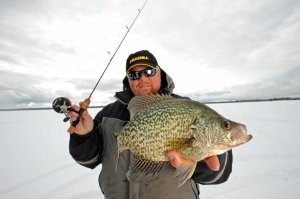Chronic Knee Pain
Question
Hi,
I have always run on a regular basis; short distance and never over 6 miles. I am very active and I am in good shape but for some reason, 6 years ago, at 26 y/o, I went for a run and after 10 minutes, the outside of my left knee started hurting for no apparent reason (the pain seems to be at the fibula head). The pain was acute and a minute later, I couldn't walk. The pain was there for 1 or 2 days after and was only present when I tried to walk. There wasn't any inflammation visible on the site but it felt like there was. Since that day, every single time I tried to run, this happens every single time. It is very frustrating and I don't know what to do anymore. I went to many doctors, chiropractors and physiotherapists. I also had X-rays done and nothing was found. It seems that nobody can find anything wrong and give up. I wonder what is going on and I don't know what to do next. Some doctors thought it was be my IT band but then changed their minds. There is absolutely no pain other than that. The only other sports where I feel pain is biking (and its far from being as bad) and hiking with a heavy backpack. I play squash where my knees are bent a lot and this does not cause any pain. Pressure on the site doesn't hurt at all neither. I tried not to run for a full year and the result was the same at the first try. I am very desperate to know what it could be and I would really like to do the things I enjoy again. Thanks for your time.
Answer
It's going to be very hard to help you with your question. The fact that you've already been to several doctors, had multiple diagnostic tests, and still don't have a diagnosis must be very discouraging and frustrating to you. I'm not a doctor, and even if I was, I doubt I could provide you with any type of clinical diagnosis through a text-only forum such as this.
That being said, there is nothing to prevent us from applying some deductive analysis to your problem, and coming up with some possible courses of action. I think the most significant clue to consider is that your knee issue occurs during certain physical activities (running, biking, backpacking) but not others (squash). The thing to analyze would be the kinesiological differences between these activities, and why some cause you to have problems and others don't.
Squash, like tennis, requires players to assume a posture whereby their knees are bent and they are slightly bent over. This is the same crouching posture assuming by people in other sports - such as baseball and tennis. It allows a person to respond quickly to play via rapid lunges in arbitrary directions. In squash, once a player lunges, the subsequent sprint-distances are very short because squash courts are small. So in essence, squash players perform a kind of leaping action, with or without several steps in order to reach the ball. There are plenty of other things going on - twisting at the waist, rotation of shoulders, etc. - but for the sake of this analysis, lets focus on what happens below your hips. Another thing that occurs people spring into action from this crouching position is that forces are delivered to the ground through the front of the foot (toes and ball), not the heel. In fact, if you look carefully, some people in this crouching position actually keep their heels elevated off the ground right before action occurs.
Running, in contrast to squash, requires an upright posture and repetitive stepping/jogging motions for long periods of time. Hiking is similar, but since you are not running, the steps are shorter and would normally have less impact, unless you happen to be carrying a heavy backpack. Although good running form does not involve transmission of significant force to the ground through the heel, most people do not have good running form. Hiking will involve a variety of force transmission points across the foot, as necessitated by stepping on uneven terrain. On the other hand, large sturdy hiking boots do not allow much foot flexibility, and therefore most people using them will rely on heel-to-ground strike patterns.
Biking is quite different than the other activities. Dynamic impact forces (what occurs when one body strikes another) are very low in biking. However, biking involves the application of force through the knees when they are bent at a more acute angle than what occurs during running or hiking. In some cases, there are also small shear forces not present in other activities.
As far as running goes, I think a good thing for you to try would be barefoot running on some soft terrain. The terrain doesn't have to be super-soft - just enough so that you are not going to scrape up the bottoms of your feet.
When a person runs barefoot, they naturally adopt a good running form. Imagine running across a hard surface, such as concrete or asphalt, while barefoot. The way you would run would likely be quite different than how you would run on these surfaces while shod. In order to reduce the discomfort of your foot striking the pavement, you would take shorter steps, and land with your knees slightly bent, striking the ground somewhere from your mid-sole to your toes. If you were to land on your heels with your legs mostly straight, it would be incredibly painful. You would feel the impact all the way up into your head! The way you would run barefoot on pavement would not be as fast as you run with shoes. It would also be harder, because you would have to expend effort to lighten the impact of your feet on the ground. This conservative running pattern is basically how your body evolved to run.
A lot of running issues could be solved if people learned to run this way first, and then continued to run this way while wearing shoes. I can't guarantee that you will be able to run again without pain, however, it is worth pointing out that running in the way I describe above (fore-foot strike with legs slightly bent) is much closer to the crouching squash posture you are able to do without pain. If this is a new way of running for you, it will take take you some time to get the hang of it. You will have to "unlearn" your old running habits. Learning a new stride requires you to develop what is called "muscle memory", which can can only be learned through repetitive physical practice, not be just reading about it.
It's a good bet your knee might also benefit from some strength training. If you were to get a diagnosis and/or have surgery, you would likely wind up in physical therapy where you would be required to perform a variety of stretching and strengthening exercises. Since you don't have a specific diagnosis, it may not be possible to select specific exercises that would benefit you. But there are plenty of good all-around leg strengthening exercises, such as squats, dead lifts, lunges, etc. Stick to compound exercises like these using weights. Do not use exercise machines (e.g., leg extensions, leg curls, etc.) These machines tend to isolate single muscles. Using weights, by contrast, requires the use of multiple muscles in a coordinated way that leads to synergistic improvement and development. Not only do these types of compound exercises improve balance and coordination, they also help to develop all the tiny muscles involved in joint stabilization - muscles which might be weak and/or damaged in your knee.
Good luck!
Bottom, forefoot pain
Possible Iliacus pain?


